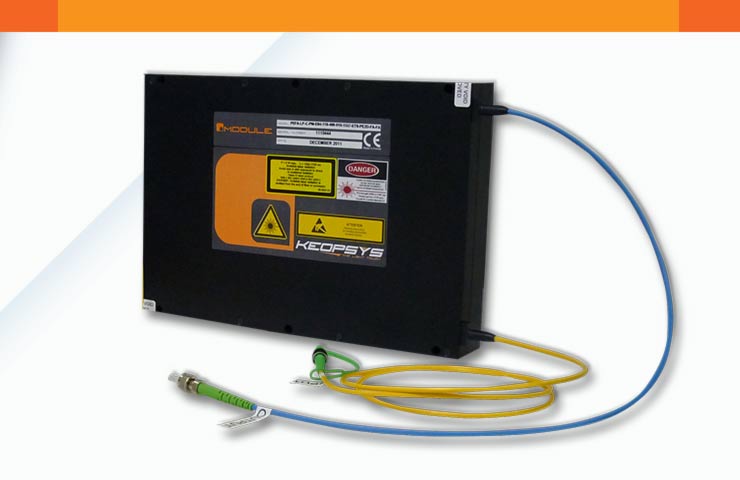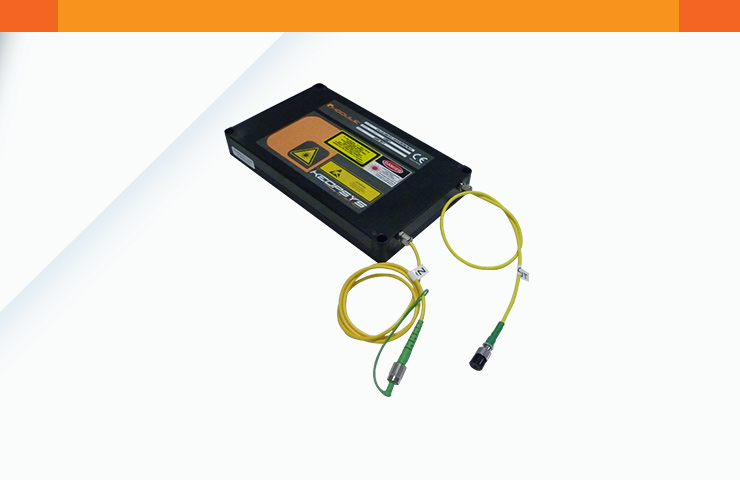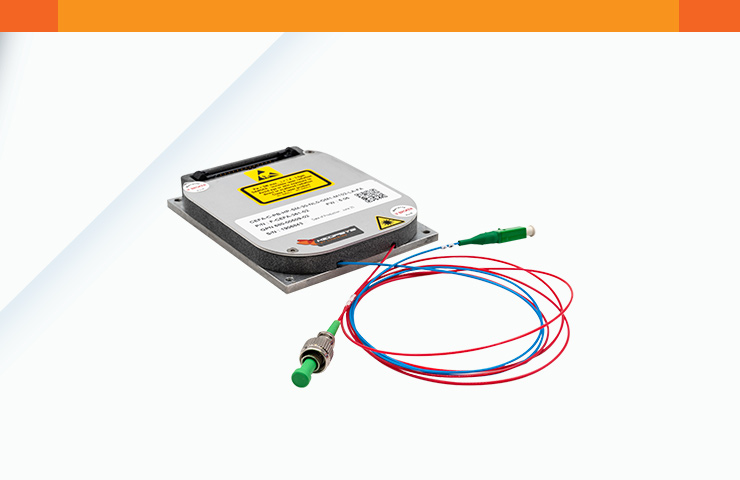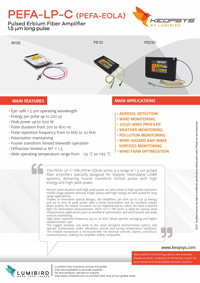Wind monitoring, Aerosol detection are accurately measured with the Lumibird maintaining polarization pulsed fiber amplifiers.
PEFA-EOLA series are designed to be polarization maintaining amplifiers and for long pulses operation. The output beam is diffraction limited to have a near gaussian-beam.
With a pulse energy up to 110µJ (and more on request) and pulse duration from 200 to 400ns, the PEFA-EOLA amplifiers series are essential to get accurate measurements.
Wind monitoring needs devices with high performance. Therefore Lumibird developed its electronic boards and optical components to perform low RIN devices. With a single mode laser beam associated to a low RIN, it offers to a system to get far (more than 10km) and precise measurements, reducing therefore uncertainties.
Lumibird chooses reliable and standard components from European suppliers. First, it ensures the supplying chain; then it permits to reduce FIT and so to increase MTBF; finally, reduce the delivery time and carbon footprint.
Compact, robust and vibration tested the OEM module can be integrated easily and provide long life duration. There is no need for installation. However, Lumibird provides a free support helping you to acquire good practices with fiber devices.





